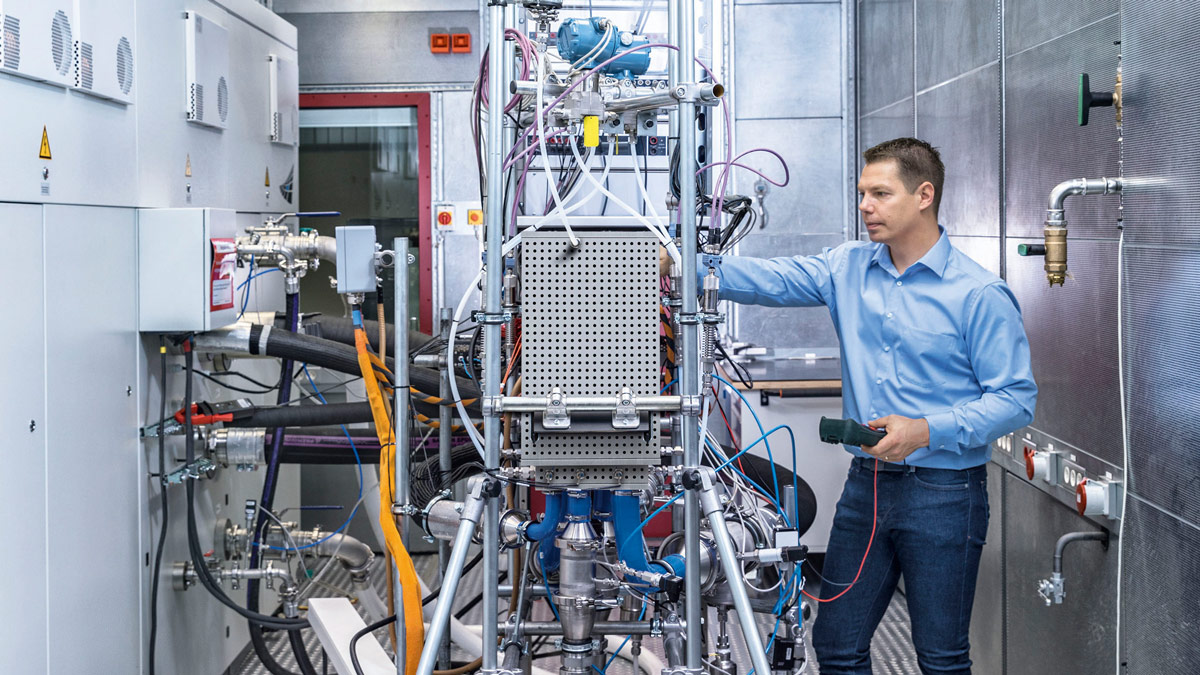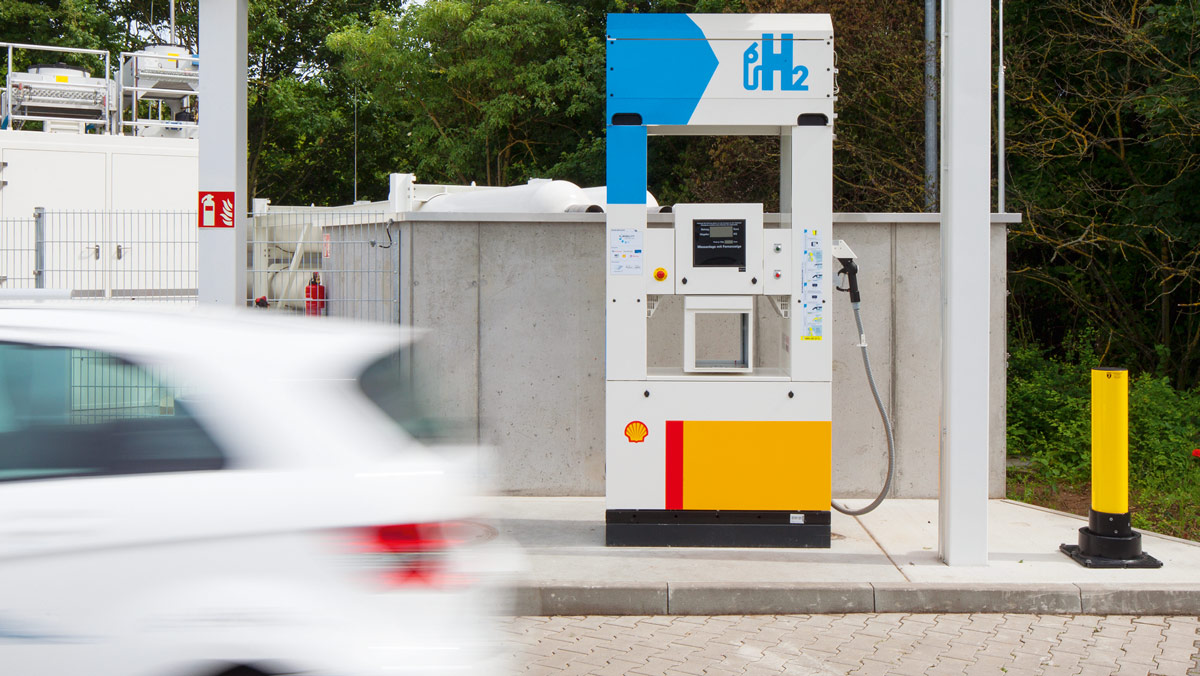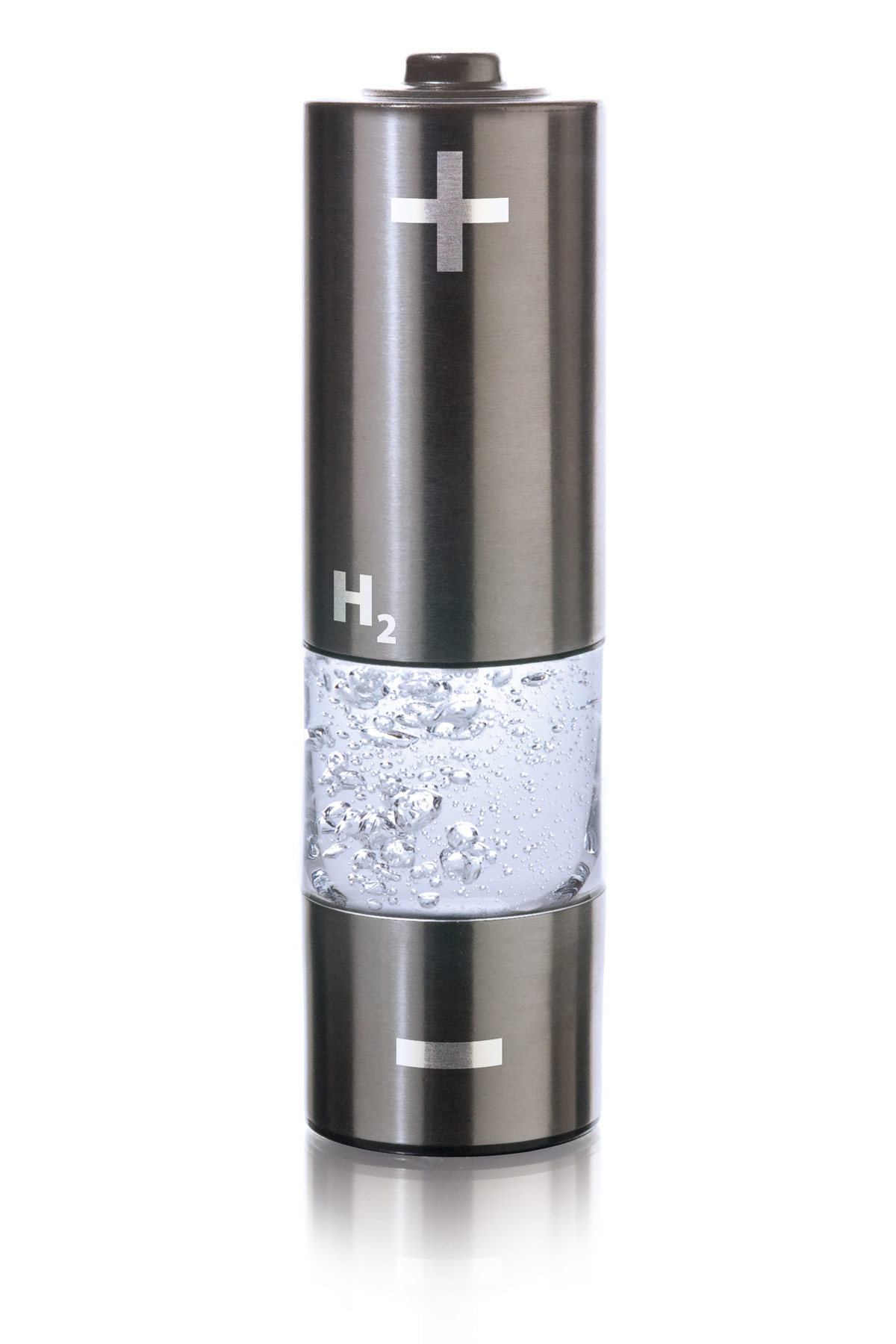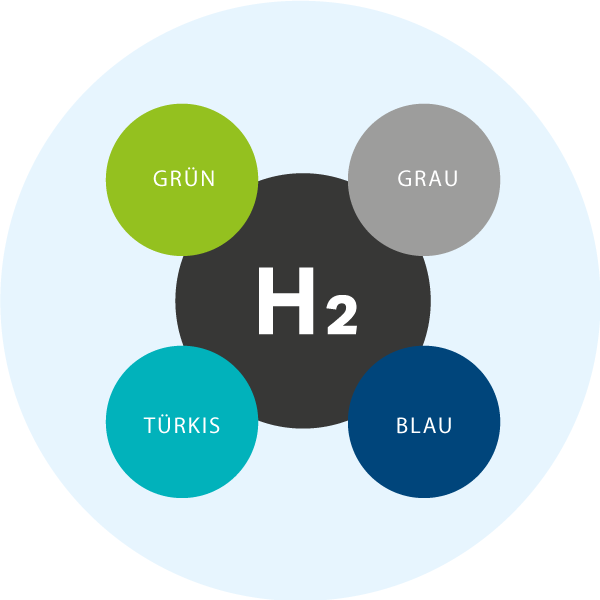Turning the tide: The start of the hydrogen era
Hydrogen has long been regarded as the energy carrier of the future. Until now, there has been a lack of regulatory pressure to give this beacon of hope a specific perspective for its breakthrough. This has changed, particularly as a result of the Paris climate protection agreement of 2015 and numerous international H₂ programs. The versatile gas is also experiencing a renaissance in Germany. The time seems ripe for an energy transition driven by hydrogen, as an overview of the resource’s potential, its deployment options and political action shows.
The potential of hydrogen and its importance for the defossilization of entire economies are undisputed: H₂ moves vehicles via fuel cells and combustion, can be used industrially – for example in the chemical industry and steel production – and can replace fossil fuels in aviation and building heating. In Germany, hydrogen could solve the storage problem for renewable energies and, in the production of synthetic fuels, contribute towards lower CO₂ emissions from the new and existing fleet.
And that’s not all: Hydrogen could supply energy to areas that cannot be electrified and serve as a key link in sector coupling, the energy dovetailing of transport, electricity, heat and industry:
With the conversion of renewable energies to hydrogen (power-to-gas), green electricity can be stored in the medium and long term and used in a variety of CO₂-reducing ways between sectors.

«There will be no getting around the need to introduce hydrogen as an energy carrier and the products based on it to the market much more quickly in the next few years if we want to gradually achieve the climate targets.»
— Head of sustainable mobility and alternative energy sources at the German Energy Agency (dena)
National hydrogen strategy, EU green deal
The political course for this has been set: With both the German government’s National Hydrogen Strategy (NWS) and the EU Commission’s Hydrogen Strategy, authoritative decisions were made in 2020 for the development of a hydrogen economy. The core objective: Hydrogen should make a significant contribution towards climate neutrality. The German government is providing 7 billion euros for the market ramp-up of H₂ technologies in Germany and a further 2 billion euros for international partnerships – in the view of policymakers, valuable impetus for overcoming the economic consequences of the coronavirus pandemic.
The background to the plans to make hydrogen the central lever for a CO₂-neutral economy is the European “Green Deal.” The EU Commission’s concept is intended to make the transition to a resource-conserving economy in Europe a success. With the NWS, Germany is setting the regulatory framework to push research and development as well as the export and use of innovative H₂ technologies.
Research funding from the federal government
H₂ and fuel cell technology is not yet competitive as an alternative to battery-electric and internal combustion engine drives in transportation due to excessively high costs, including the still low volumes. The National Organization Hydrogen and Fuel Cell Technology (NOW) GmbH, which coordinates funding programs for sustainable mobility on behalf of federal ministries, is therefore supporting suppliers, for example, in the development of more cost-effective and lighter pressure tanks for H₂ storage – the much more expensive and heavier pressure tanks have so far been an obstacle to market ramp-up.

«We are focusing on areas that we can influence. This is about promoting development, but also about networking within the industry so that manufacturers can start projects together.»
— Team Manager at the National Organization Hydrogen and Fuel Cell Technology (NOW) GmbH
Whether rail, bus or passenger car – the demand for H₂ deployment options in transport and government funding is increasing everywhere, according to NOW. Heavy-duty transport promises the greatest rates of increase in the use of hydrogen, partly because batteries are not yet designed for the weight and long distances of commercial vehicles and there is a lack of sufficient charging points.
“The topic is currently very prominent, and the political will is great to do a lot there,” Hof says, predicting wider use of hydrogen in trucks from 2025.
The world’s largest car market, China, also has a complex funding landscape for H₂-mobility. In its new 15-year plan, the central government aims, among other things, to create an infrastructure for fuel cell vehicles and promote the development of H₂-powered buses and trucks.
International H₂ Cooperation
In addition to funding, German policymakers are also focusing on partnerships with countries that, thanks to their geographical location, can produce hydrogen efficiently and thus also supply Germany. At the end of 2020, 22 EU states including Germany and Norway declared their intention to support the development of a European value chain for green hydrogen in particular. Similarly, the German government is funding a project to further develop electrolysis components in Saudi Arabia as part of the NWS.



Criticism from industry
For the business community, the policy plans do not go far enough. In order to leverage the potential of hydrogen for climate protection and jobs, companies are pushing above all for a higher statutory minimum share of renewable energies in final energy consumption for transport and thus for more ambitious implementation of the EU requirements. For example, the planned electrolysis capacity of 5 gigawatts by 2030 could already be achieved by the middle of the decade, says the German Engineering Federation (VDMA), whose members are among the leading suppliers of electrolysis and H₂ processing plants.
“Politicians must generate a demand market for hydrogen so that it is worth investing in this technology,” says Peter Müller-Baum, Managing Director of the Power-to-X for Applications AG at VDMA. “The path taken is right, but the pace is too slow.”
In addition, the burden of the EEG levy on green electricity for hydrogen production must be eliminated and, if necessary, other levies must be reduced in order to achieve an attractive hydrogen price.
H₂ pioneer Japan
The example of Japan shows how this can be done. The island nation propagated the path to a hydrogen society years ago and is pursuing this change with vigor. The domestic market for fuel cell vehicles is to be massively expanded by 2030 to include trucks, buses and forklifts. Analogously, the use of H₂ via fuel cells is increasing in the heating and power supply of homes. In addition, the country is taking a more pragmatic look at the use of different H₂ variants depending on their origin, prioritizing security of supply and market incentives.
Green hydrogen is the trump card
For the German government and industry, Japan’s path could be exemplary in some areas, argues Siegemund of the energy agency dena. “The use of blue hydrogen may have advantages for long-term market development if there are also firmly defined targets for green hydrogen,” Siegemund said. The NWS is clearly committed to green hydrogen, which is produced CO₂-free from renewables, but also allows for transitional use of blue hydrogen, which is produced through CO₂ capture and storage and is considered CO₂-neutral.
One thing is clear: The foundation for entry into a modern hydrogen economy has been laid with the unequivocal commitments made by politicians and industry. H₂ fuel cell technology is absolutely ready for the market and demand is also broad-based. “Now we need to ramp up production and distribution of hydrogen to generate cost advantages and make the technology competitive,” Hof says. “I believe that in ten years, we will actually already be living in a different world,” predicts VDMA representative Müller-Baum. “We are in the middle of the development towards a defossilized world.”

Green Deal
The EU Commission’s concept is intended to make the transition to a resource-conserving economy in Europe a success. The roadmap for making our continent climate-neutral by 2050 includes measures in all sectors of the economy. These include boosting the economy through green technologies, creating sustainable industry, promoting green mobility, curbing pollution and decarbonizing the energy sector. The use of renewable hydrogen will play an important role here in the future. As part of the Green Deal s, the EU plans to mobilize at least 100 billion euros between 2021 and 2027 in regions struggling most with economic transformation.
National hydrogen strategy
With the National Hydrogen Strategy, the German government is setting a framework for action for the future production, transport, use and further use of green hydrogen. The NWS defines steps to help achieve the Paris climate protection targets, create new value chains for industry and advance energy policy cooperation at the international level. The German government is providing 7 billion euros for the market ramp-up of H₂ technologies in Germany, plus a further 2 billion euros for international partnerships. Electrolysis capacity of up to 5 gigawatts is to be achieved by 2030, with a further 5 GW to be added by 2040 at the latest.

Small H₂ color gage
Green hydrogen
is produced from renewable energies and is completely CO₂-free. Electrolysis uses renewably generated electricity to break down water into its components hydrogen and oxygen. The federal government’s strategy is to make green hydrogen marketable and enable its industrial production, transportability and usability.
Blue hydrogen
is gray hydrogen whose CO₂ is captured during production and stored, for example, by “carbon and capture storage” (CCS). The CO₂ generated during hydrogen production thus does not enter the atmosphere and hydrogen production can be considered CO₂-neutral.
Turquoise hydrogen
is produced via the thermal cracking (pyrolysis) of methane. Instead of CO₂, solid carbon is produced. Prerequisites for the CO₂-neutrality of the process are the heat supply of the high-temperature reactor from renewable energies and the permanent bonding of the carbon. In addition, turquoise hydrogen has the potential to be CO₂-negative if biomethane and renewable energies are used for hydrogen production instead of fossil methane.
Gray hydrogen
is generated from fossil fuels. Usually, natural gas is converted into hydrogen and CO₂ by steam reforming during production. The CO₂ is subsequently released unused into the atmosphere, thus reinforcing the global greenhouse effect.
Source: German Federal Ministry of Education and Research (www.bmbf.de)
The article was published in automotion 01/2021, the automotive engineering magazine of IAV. Here you can order the automotion free of charge.
- Hydrogen & Fuel Cell
- Powertrain Development

